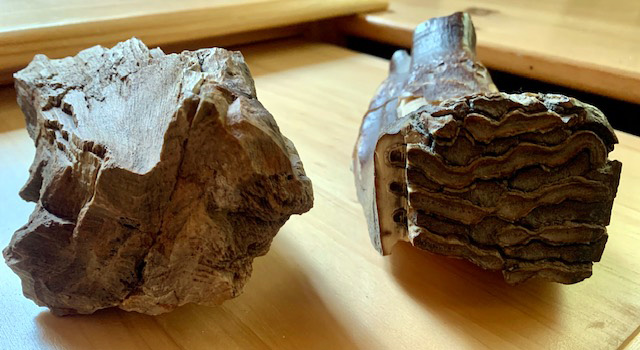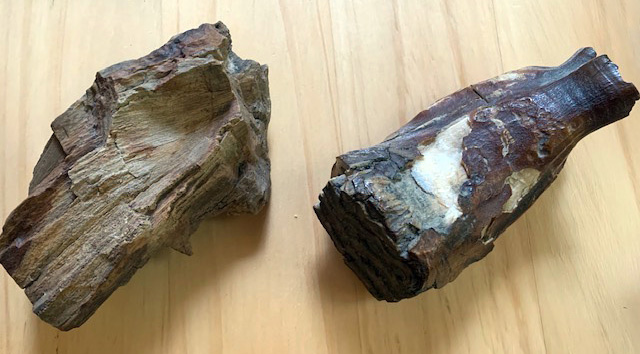A Blog of Personal Thoughts
The Language of Rocks
July 2022
I have borrowed part of the title of my brother’s book, The Language of Rocks: Geology for the Novice. He asked me to copyedit it. I did, but sadly, not until after he died in a car crash. We were close and even now seven years later, I still ask him questions or talk to him about thoughts, ideas, and concerns. Of course, he never responds and I must figure out the answer. Some have to do with family, politics, geology, and behavior measurement. The conversations include “Have you read this or that book? You must!” One was T Rex and the Crater of Doom. It may have been our older sister, Mary, a chemist then chef, who read it first. No matter, we all had a fascination with the history of the planet and other concepts scientific.
Today, I’d call Mary and Bill. Have you read Colin Fletcher’s book, The Man Who Walked through Time, his walking journey through the Grand Canyon? You haven’t? Oh you must and then we can talk about it. Fletcher’s journey was more than just a walk through, though. Briefly, and I grossly simplify, his route varied by a vertical 3,000 to 5,000 feet. He walked through desiccated flat areas, climbed up and down rocks and across taluses, listened to the river, swam across it a few times, felt the hot sun, and slept under starred skies. His point in the journey, and the book, was that he walked through five million, 5,000,000, years of Earth’s history displayed in the Grand Canyon’s rocks. He heard today’s birds, beaver, wild donkeys, and most importantly, timeless silence. On his journey, it was the rocks and their history that became his companions.
Bill Calkin, this marvelous brother of mine, began his book with “Rocks are the fundamental or skeletal parts of Earth, and, therefore, become extremely important in unraveling the complexities of Earth’s history.” I add that human history depends on Earth’s history. As rocks change, as climate changes, so too does human history.
 |
Rock on the left, petrified wood. Rock on the right, half of a mastodon tooth. |
I wanted to major in geology, but the professor at the University of Colorado asked me what I wanted to do. Field research, I replied. What would be open to me was teaching. No, I didn’t want that. I wanted to do field research, but in 1960 not a possible option for a woman’s profession. I majored in psychology and became a teacher and educator and still follow that profession these 63 years later. My interest in the history of Earth, the Milky Way and beyond has not waned, however.
Fletcher talks about the profound silence of the canyon. I feel that. I hear that. I see that. There was a reason I climbed to the tops of trees that towered over the roof of the three-story house that was my childhood home. Silence existed there and no one could find me to interrupt. There is a reason I married my husband, each of them actually. They loved silence. Ed Koch was a well-respected painter who usually did not want to be disturbed when doing anything. He was also grumpy, very grumpy. I divorced him and married Robert.
The night Robert and I met, we agreed we wanted to live in the country. We do. The silence is profound. Yesterday evening I went for a walk down an old driveway. I heard nothing. Silent neighbors, animals, birds. No wind in the trees. I thought about Fletcher’s journey of silence and rocks.
Both book covers show a man standing at the edge of a cliff peering down across millennia of history, something I admire but cannot do. Fletcher was much more a loner than my brother or I. Fletcher commented, not about safety, but about holding one’s own stance in life. It is an attitude that enabled him to hike the Grand Canyon alone. It is this that enabled my brother to explore areas of his research. It is this attitude that enables my husband and me to desire to live remotely here or in southeastern Oregon. We don’t feel either is remote, just well off the traveled road.
But if you judge safety to be the paramount consideration in life you should never, under any circumstances, go on long hikes alone. Don't take short hikes alone, either – or, for that matter, go anywhere alone. And avoid at all costs such foolhardy activities as driving, falling in love, or inhaling air that is almost certainly riddled with deadly germs…. And never, of course, explore the guts of an idea that seems as if it might threaten one of your more cherished beliefs. In your wisdom you will probably live to be a ripe old age. But you may discover, just before you die, that you have been dead for a long, long time. – The Complete Walker, Colin Fletcher
To walk among the rocks of the land, Fletcher tried to understand the five million years of history he saw. Calkin said it is difficult to understand Earth being 4.5 billion years old. Why? Both say because we live in the world of seconds, minutes, hours, days, and a lifetime of years. No one directly understands 5 million or 4.5 billion of anything let alone time.
 |
A different view of the petrified wood (left) and of the mastodon tooth (right). |
My understanding of time began to occur when I was nine or ten. My father talked about carbon dating as we sat at the dinner table. Prior to that, I understood time through the stories of my ancestors of the 17th and 18th centuries. Then my father’s friend, Dr. Zander, also a chemist, told me that my life was less than a second of geologic time.
Fifteen years ago, I retrieved some macoma baltica shells, little pink clamshells, about half an inch in length, from a newly dug well next door. I sent them to Beta Analytic for analysis. They were about 2,700 years old, meaning that my place was then beachfront property. Because we are on a glacial outwash plane, dock pilings are 200 feet deep without hitting bedrock.
I live on a muskeg, an unromantic glacial outwash plain—
four inches of soil lie atop sand lie atop gravel, lie atop sand till
ten meters below lie macoma baltica shells on yesterday’s beach.
Today’s beach is three miles south. It is these shells that tell me
2,500 years ago when Socrates orated,
Plato wrote, and the first democracy flourished,
this was beachfront property.
I rock on my deck and ponder that,
hear, feel the waves against the shore beneath my feet.
To inhabit the boggy terrain, men dug ditches,
drained the muskeg—sort of. We built houses and a town here.
The land rose because the glaciers retreated—isostatic
rebound they call it…and the ditches turned to streams that
carried the salmon past my cabin in the woods as they
made their ways into new channels into deeper streams holding
the right smells, tastes, and chemistry
I also live on land that during the Great Ice Age of 18,000 to 22,000 years ago. Our area was covered with a glacier almost a mile thick that went from Skagway into the Pacific Ocean. I sometimes lie on our beach and look up 4,000 feet. I become a small shell and then am compressed by the tons of ice. I will become a fossil embedded in rock for the inveterate hiker or geologist to come upon and marvel at this remnant impression and history. I don’t become Fletcher or Calkin, for I am as mere a shell as the old macoma baltica.
Yes, I can understand that my ancestors lived here long ago. I can understand the age of the 2,700-year-old macoma baltica shell. Yes, I can understand that a glacier covered where I now live 20 millennia ago. I feel those events inside me.
I have hiked around in one of the oldest mountain ranges on the planet. The Wichita Mountains, in Oklahoma are some 500,000,000, or 500 million years old. I lived in the Rockies for four years. I lived in Scotland, New England, and Nova Scotia where the mountains were worn to hills. Where I live now, mountains—the Chilkats, the Fairweather Range, and the mountains of Chichagof Island, surround me. The Fairweathers go as high as 15,000 feet. Covered with snow and glaciers, these mountains and the rocks are from millions years ago. I like mountains and rocks—igneous, sedimentary, or metamorphic; I am indiscriminant in that. I like the ocean and its secret rocks, mountains, wave patterns, and all else.
In my study, some fossilized tree, on the left, is a bookend and at the other end, the right side of the photo, is a mastodon tooth. In between these rocks are books that members of my family and I have written, some books as young as three years and some as young as 200 years old.
 |
Books that range in publication date from about 1810 to 2019, mostly written by people in my family. I just happen to have copies of the old ones. |
My chair sits on the cabin floor, which rests on the sand of ground up rocks millennia upon millennia years old.

|
